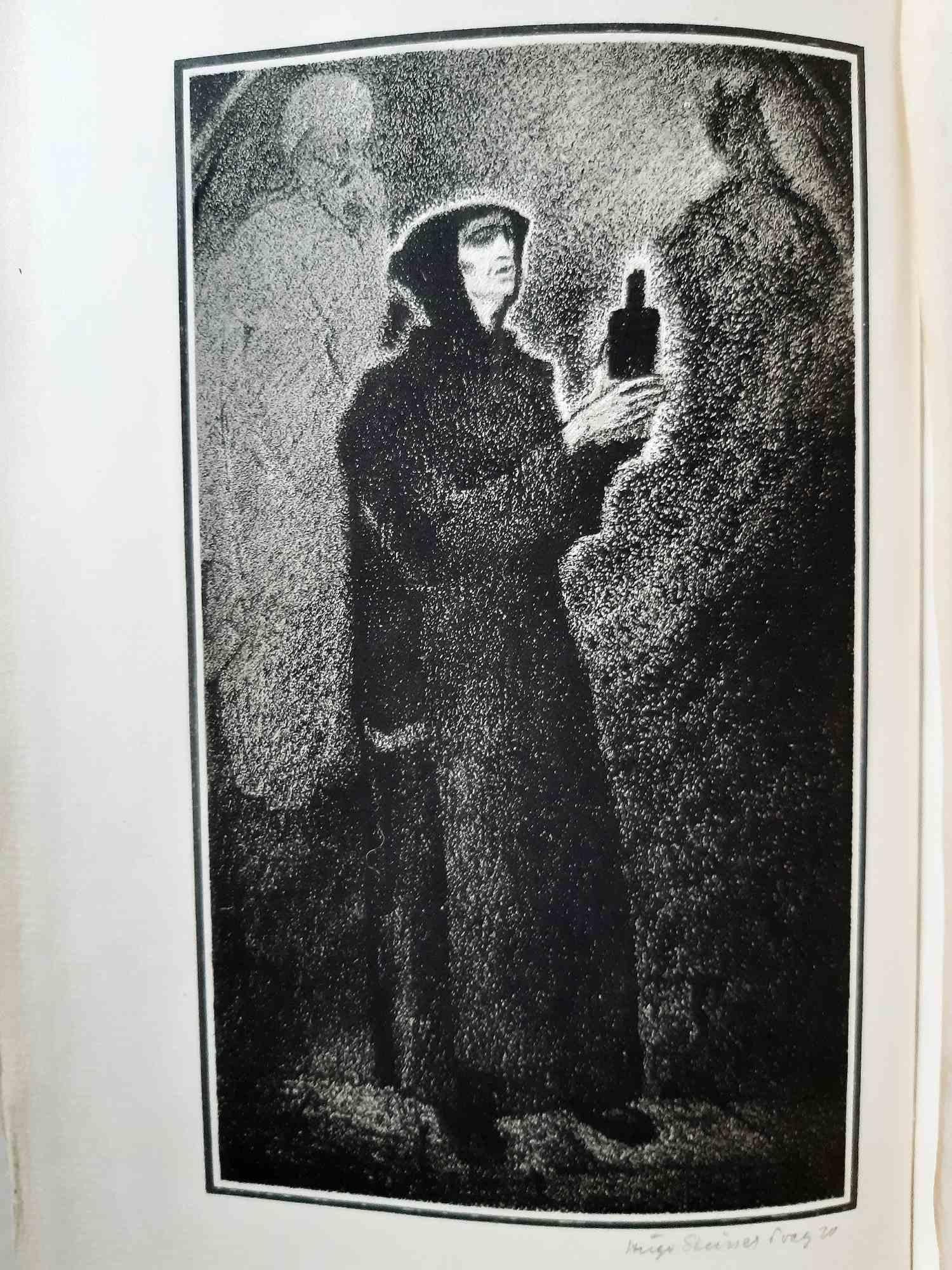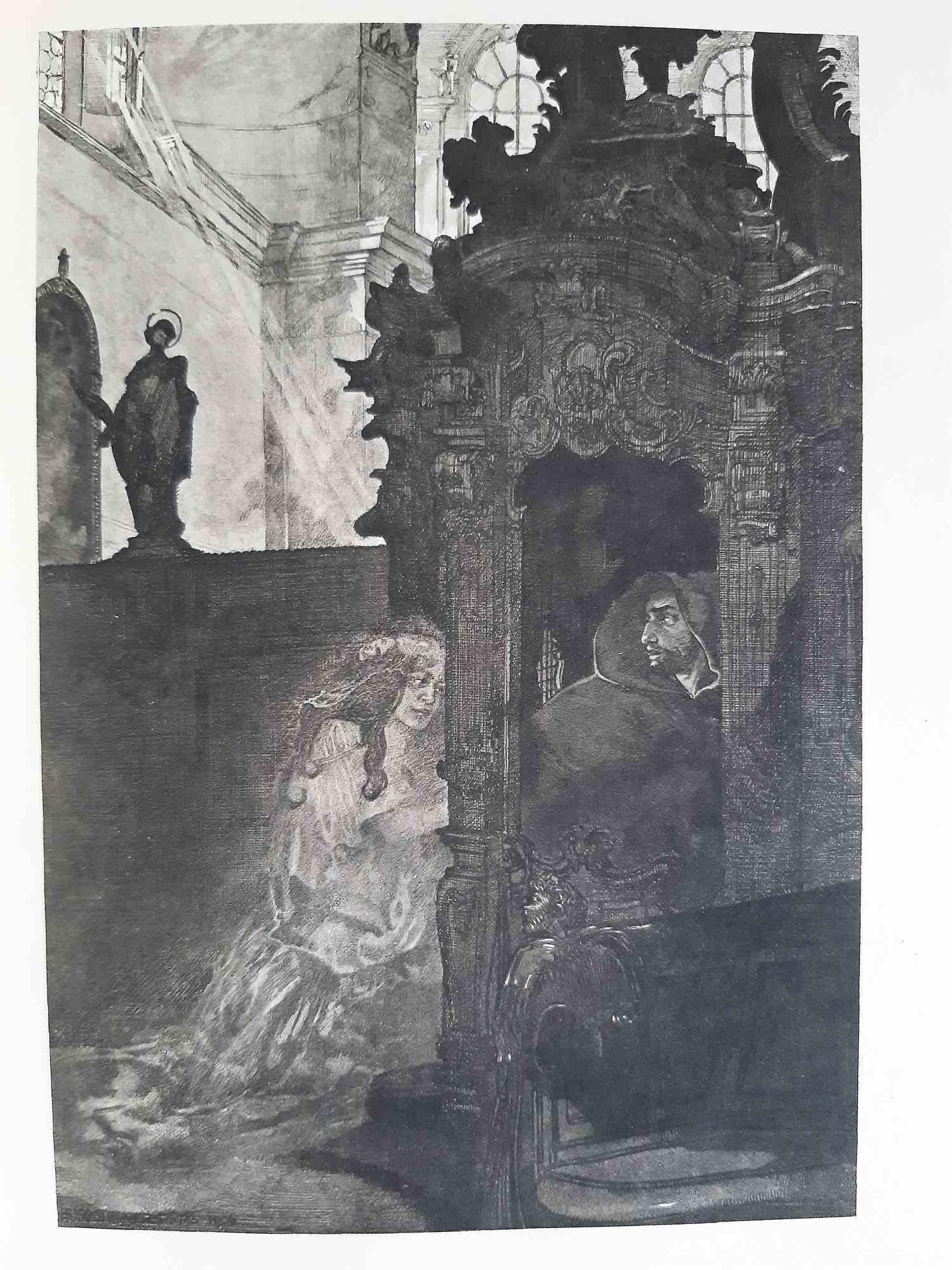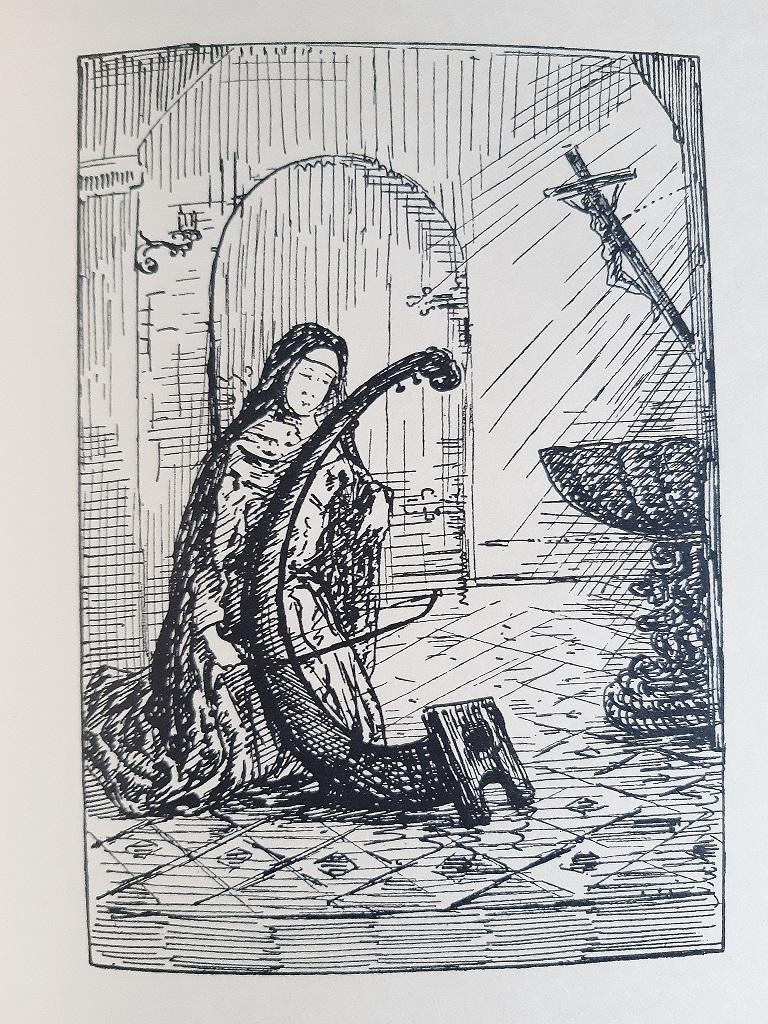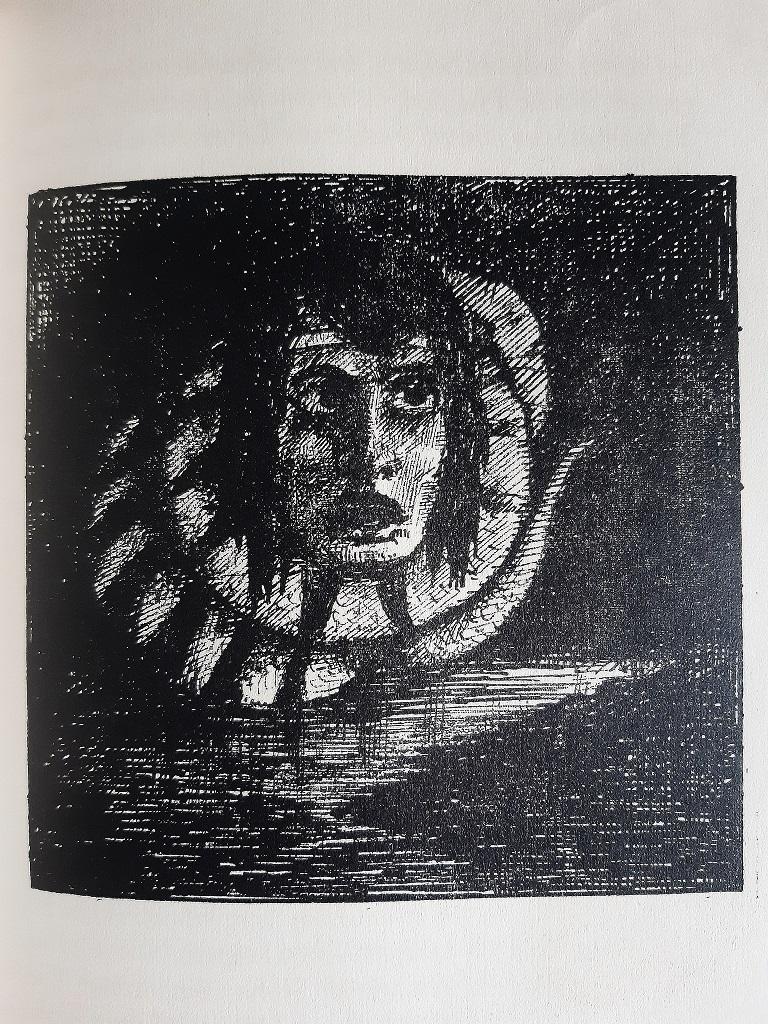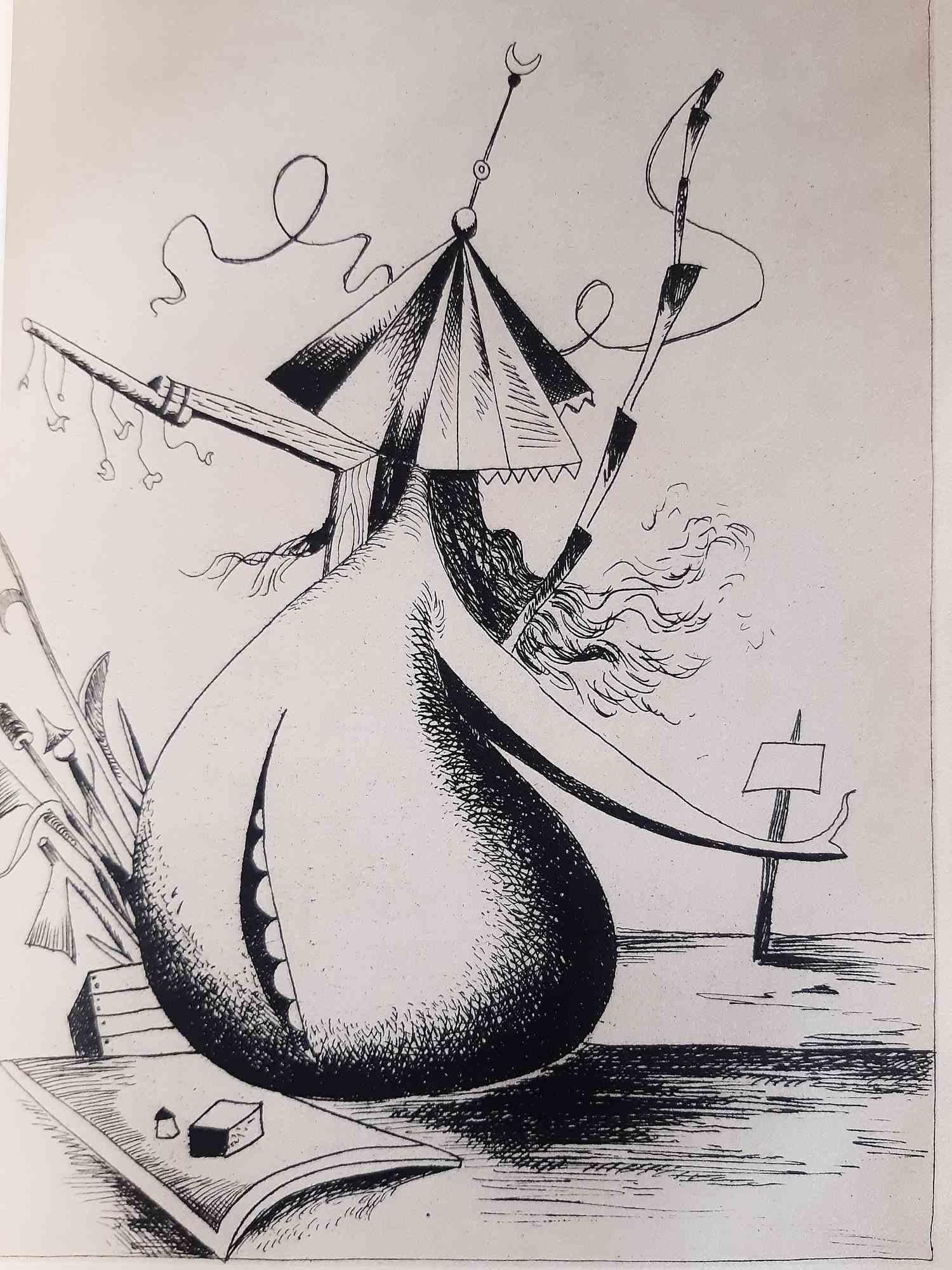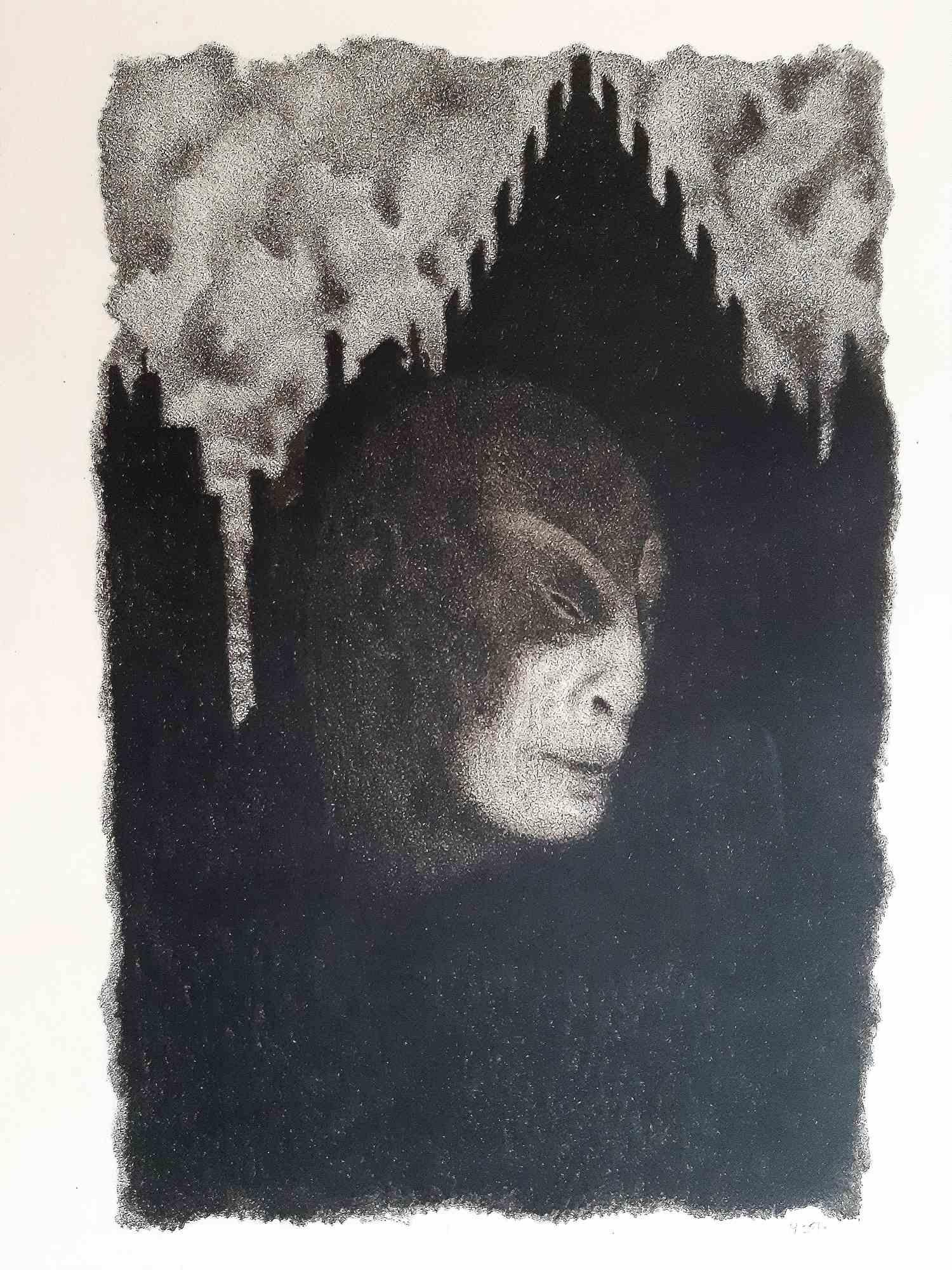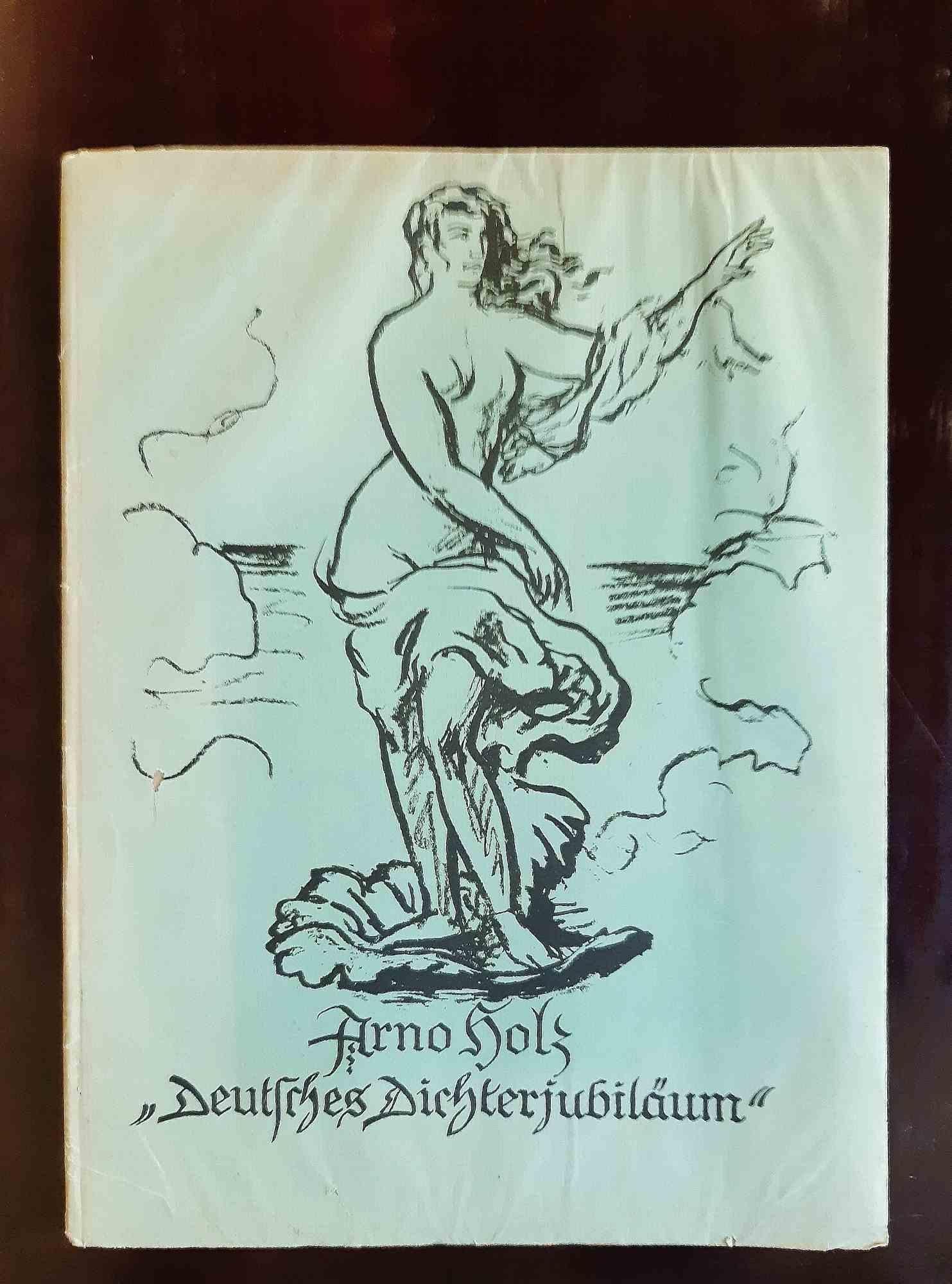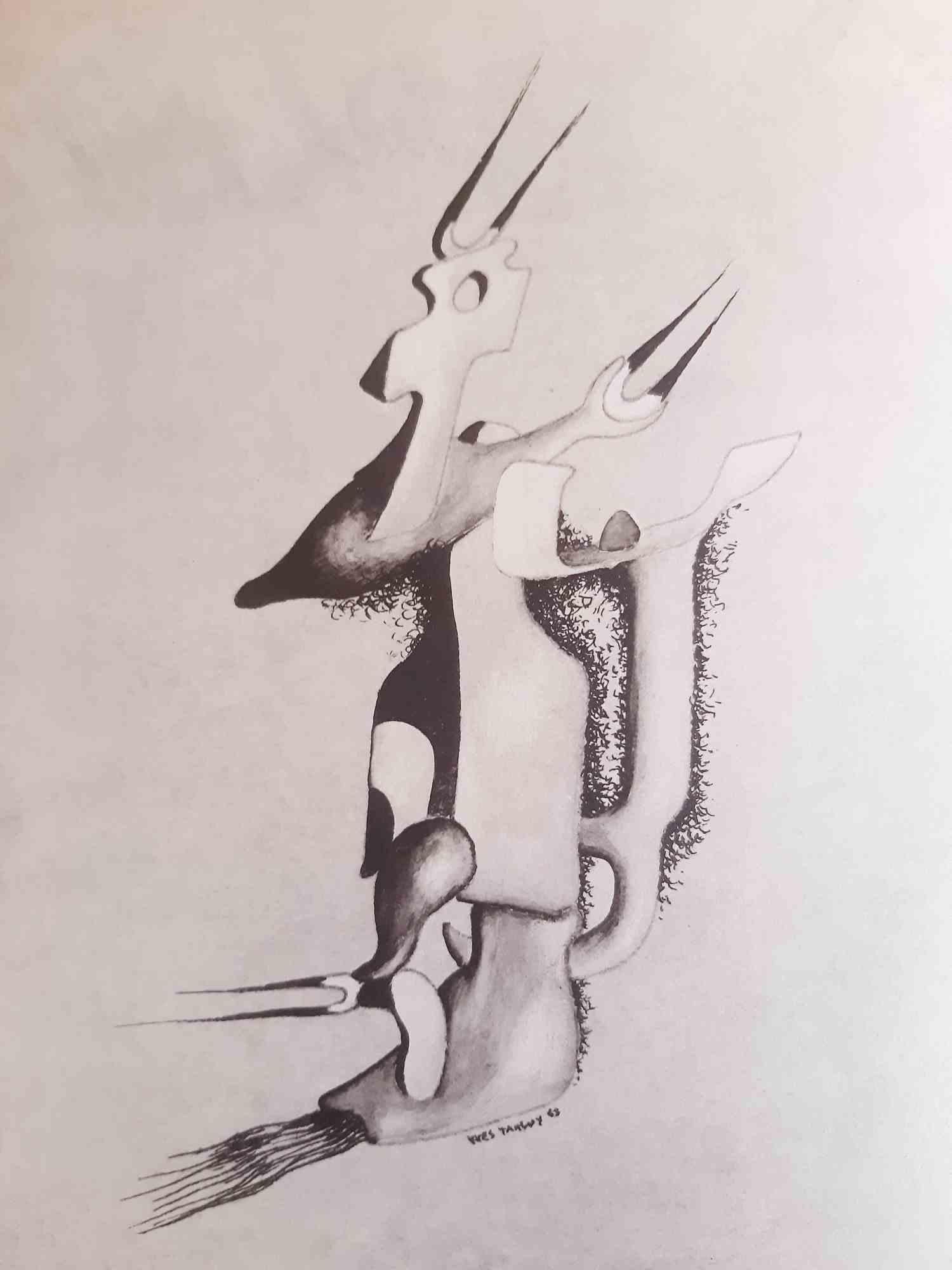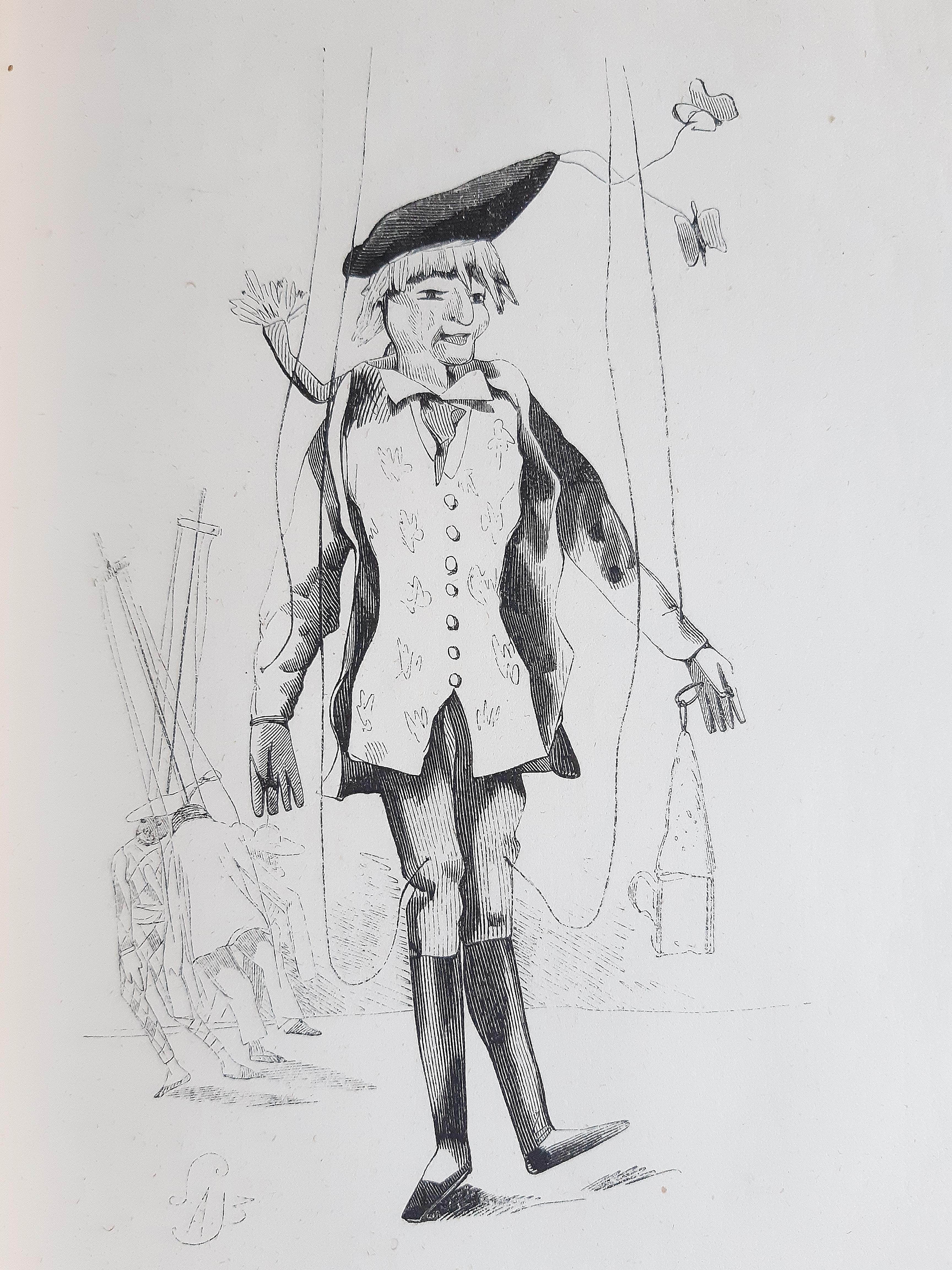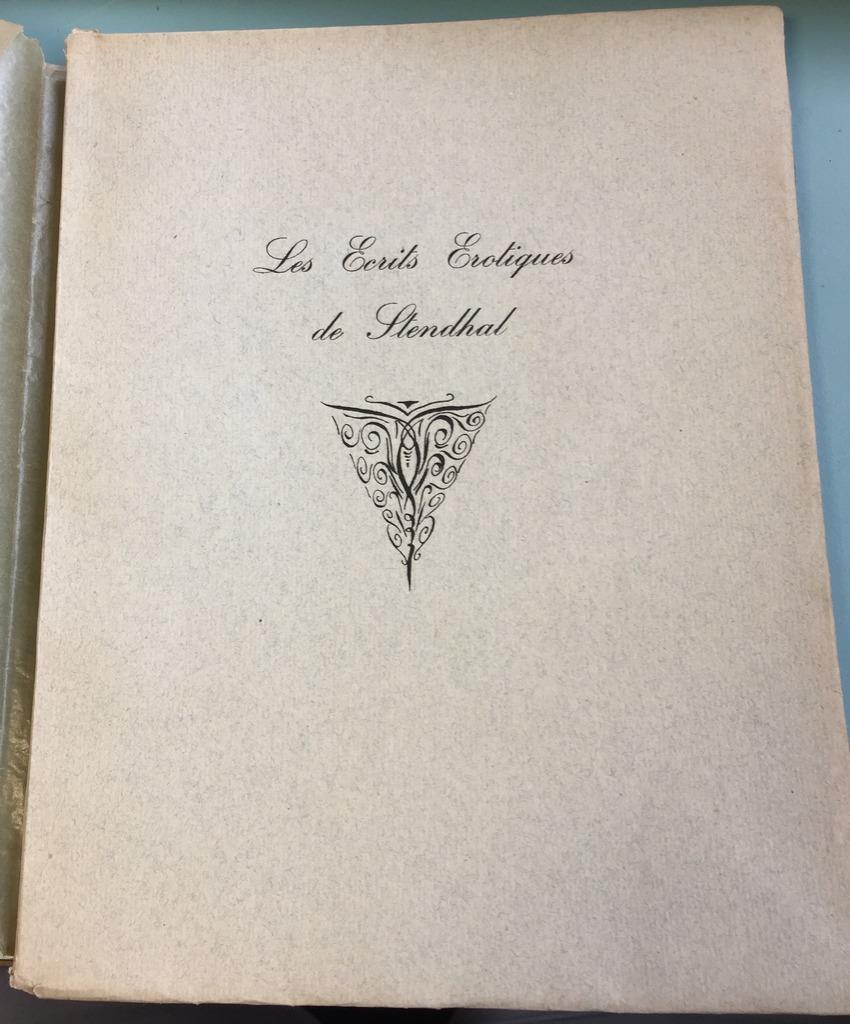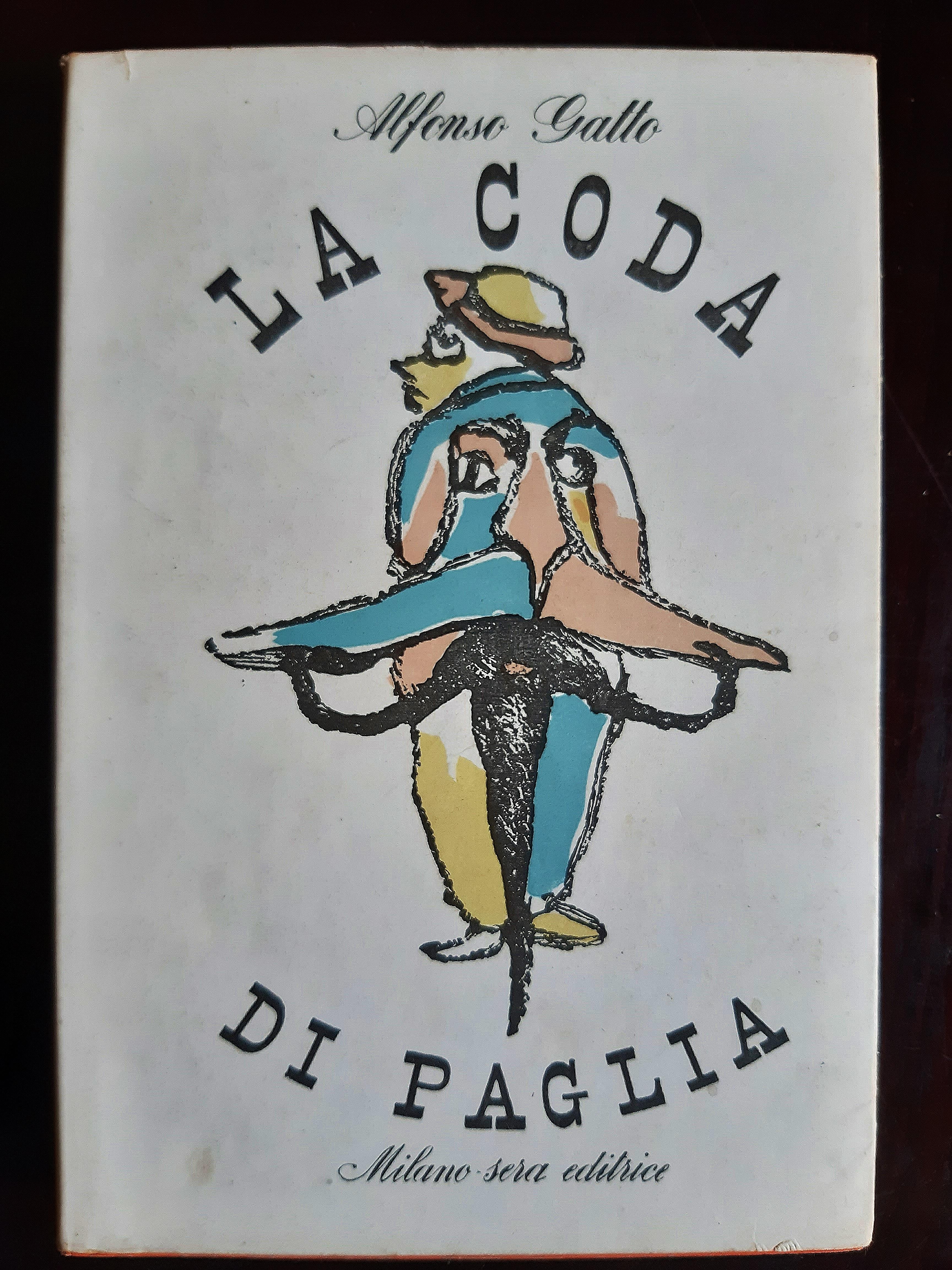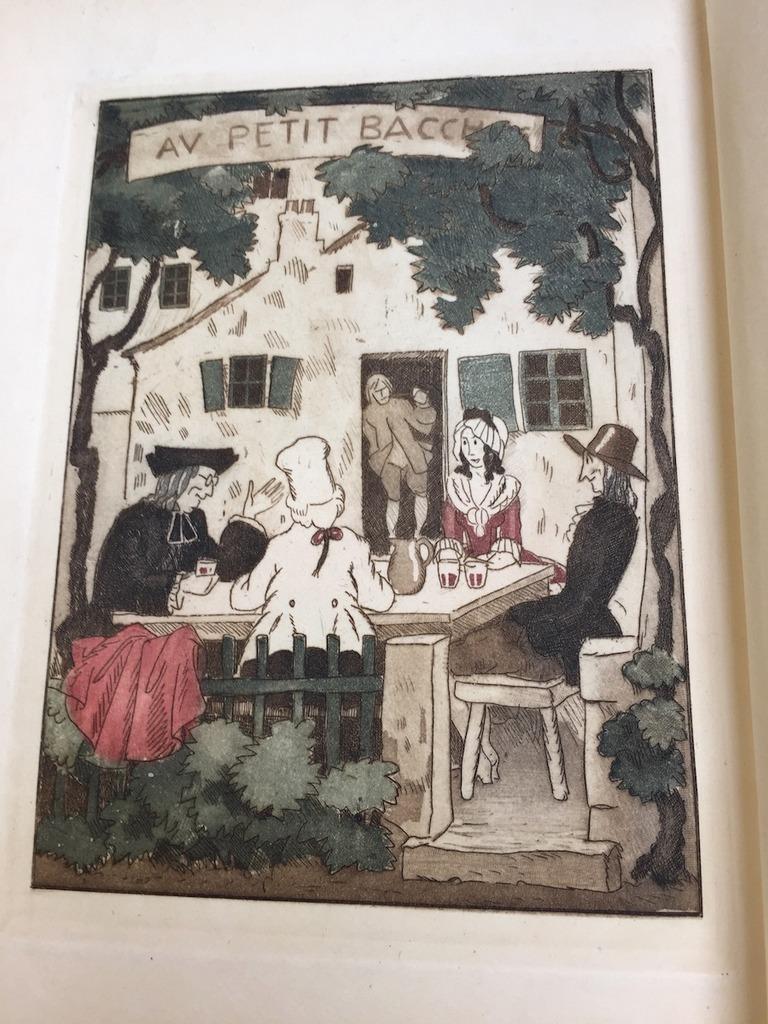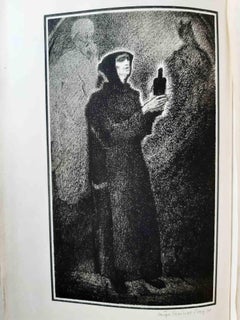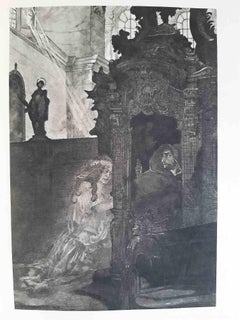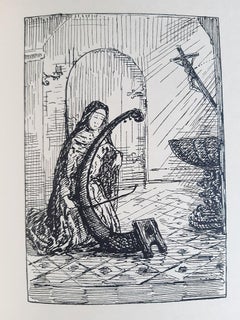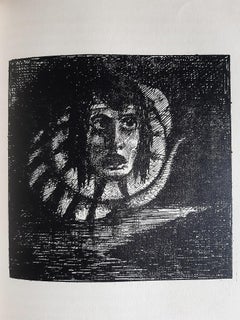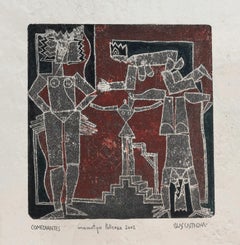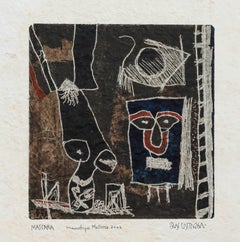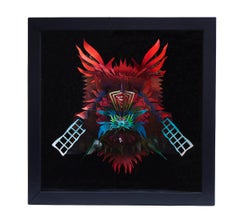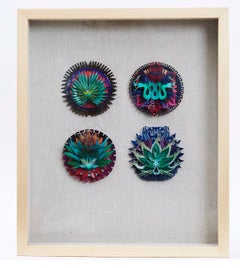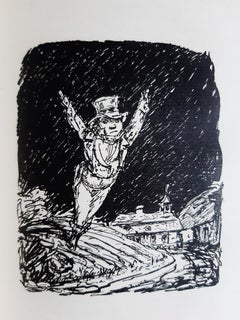
Herr von Pepinster und sein Popanz - Rare Book Illustrated by A. Kubin - 1918
Want more images or videos?
Request additional images or videos from the seller
1 of 9
Herr von Pepinster und sein Popanz - Rare Book Illustrated by A. Kubin - 19181918
1918
$2,147.24List Price
About the Item
- Creation Year:1918
- Dimensions:Height: 10.04 in (25.5 cm)Width: 7.88 in (20 cm)Depth: 0.4 in (1 cm)
- Medium:
- Movement & Style:
- After:Alfred Leopold Isidor Kubin (1877 - 1959)
- Period:
- Condition:Insurance may be requested by customers as additional service, contact us for more information.
- Gallery Location:Roma, IT
- Reference Number:Seller: M-1196951stDibs: LU65038113142
About the Seller
4.9
Platinum Seller
Premium sellers with a 4.7+ rating and 24-hour response times
1stDibs seller since 2017
7,681 sales on 1stDibs
Typical response time: 3 hours
Authenticity Guarantee
In the unlikely event there’s an issue with an item’s authenticity, contact us within 1 year for a full refund. DetailsMoney-Back Guarantee
If your item is not as described, is damaged in transit, or does not arrive, contact us within 7 days for a full refund. Details24-Hour Cancellation
You have a 24-hour grace period in which to reconsider your purchase, with no questions asked.Vetted Professional Sellers
Our world-class sellers must adhere to strict standards for service and quality, maintaining the integrity of our listings.Price-Match Guarantee
If you find that a seller listed the same item for a lower price elsewhere, we’ll match it.Trusted Global Delivery
Our best-in-class carrier network provides specialized shipping options worldwide, including custom delivery.More From This Seller
View AllDie Elixiere des Teufels - Rare Book Illustrated by Hugo Steiner-Prag - 1920
Located in Roma, IT
Die Elixiere des Teufels is an original modern rare book written by Hoffman E.T.A. (24 January 1776 – 25 June 1822) and illustrated by Hugo Steiner-Prag (Prague, 1880 - New York, 194...
Category
1920s Symbolist More Art
Materials
Paper, Photogravure
Die Elixiere des Teufels - Rare Book Illustrated by Hugo Steiner-Prag - 1907
Located in Roma, IT
Die Elixiere des Teufels is an original modern rare book written by Hoffman E.T.A. (24 January 1776 – 25 June 1822) and illustrated by Hugo Steiner-Prag (Prague, 1880 - New York, 194...
Category
Early 20th Century Symbolist More Art
Materials
Paper, Photogravure
Der Todseher - Rare Book Illustrated by Alfred Kubin - 1910
Located in Roma, IT
Der Todseher is an original modern rare book written by Ernst Adolf Willkomm (Herwigsdorf, 1810 - Zittau, 1886) and illustrated by Alfred Leopold Isidor Kubin (Leitmeritz, 1877 – Zwickledt, 1959) in 1910.
Original Edition.
Published by Barsdorf, Berlin.
30 numbered copies of deluxe issue.
Format: in 8°.
The book includes 284 pages with six full page drawings.
Mint conditions.
Alfred Leopold Isidor Kubin (Leitmeritz, 1877 – Zwickledt, 1959) in 1910. He was an Austrian printmaker, illustrator, and occasional writer. Kubin is considered an important representative of Symbolism and Expressionism. Kubin is considered an important representative of Symbolism and Expressionism and is noted for dark, spectral, symbolic fantasies, often assembled into thematic series of drawings. Like Oskar Kokoschka and Albert Paris Gütersloh, Kubin had both artistic and literary talent. He illustrated the works of Edgar Allan Poe, E. T. A. Hoffmann, and Fyodor Dostoevsky, among others. Kubin also illustrated the German fantasy magazine Der Orchideengarten.
Ernst Adolf Willkomm (Herwigsdorf, 1810 - Zittau, 1886). Willkomm was a German writer. Willkomm has published time-critical novels, travel sketches and short stories. With the title of his novel Die Europamüden in 1838 he took up a key word that had been coined by Heine in 1828 and with which an important aspect of thinking in the Vormärz was recorded. In the years 1845/46 Willkomm undertook a trip to Italy, whose experiences he processed in 1847 in the travel sketches Italian...
Category
1910s Symbolist More Art
Materials
Paper, Photogravure
Aurelia - Rare Book Illustrated by Alfred Leopold Isidor Kubin - 1910
Located in Roma, IT
Aurelia is an original modern rare book written written by Gérard Labrunie (Paris, 1808 – Paris, 1855) and illustrated by Alfred Leopold Isidor Kubin (Leitmeritz, 1877 – Zwickledt, 1959) in 1910.
Original First Edition.
Published by Georg Muller, München/Leipzig.
Format: Large 8°.
The book includes 146 pages with 57 drawings (several are full page drawings).
Binding by Paul Renner
Mint conditions.
Alfred Leopold Isidor Kubin (Leitmeritz, 1877 – Zwickledt, 1959) in 1910. He was an Austrian printmaker, illustrator, and occasional writer. Kubin is considered an important representative of Symbolism and Expressionism. Kubin is considered an important representative of Symbolism and Expressionism and is noted for dark, spectral, symbolic fantasies, often assembled into thematic series of drawings. Like Oskar Kokoschka and Albert Paris Gütersloh, Kubin had both artistic and literary talent. He illustrated the works of Edgar Allan Poe, E. T. A. Hoffmann, and Fyodor Dostoevsky...
Category
1910s Symbolist More Art
Materials
Paper, Photogravure
Der Golem. Prager Phantasien - Rare Book Illustrated by Hugo Steiner-Prag - 1916
Located in Roma, IT
Der Golem. Prager Phantasien is an original modern rare book written by Gustav Meyrink, pseudonym of Gustav Meyer (Wien, January 19, 1868 - Starnberg, December 4, 1932) and illustrated by Hugo Steiner-Prag (Prague, 1880 - New York, 1945) in 1916.
Original Edition.
300 numbered and signed copies.
Published by Kurt Wolff verlag, Leipzig.
Format: In Folio.
The book includes an original Portfolio with 25 Lithographs.
Mint conditions.
Hugo Steiner-Prag (Prague, 1880 - New York, 1945); he was an artist and illustrator. In his adolescence, he took private art lessons and was a member of Jung Prag, a group of young artists fascinated by mysticism. His formal artistic career began at age seventeen when he enrolled at the Prague Academy of the Arts, Prager Kunstakadmie, in 1897. He continued his education in Munich, Germany at the Royal Academy of Fine Arts, Königliche Akademie der Bildenden Künste. It was here Steiner added “Prag'' to his last name in recognition of his home city and to help distinguish his name from other artists. The Leo Baeck Institute has a vast collection of Steiner-Prag’s illustrations and personal mementos from throughout his entire career. Viewers can appreciate his beautifully drawn city scenes and mythical creatures, photographs, set designs, artistic instruments, and certificates of achievement. In 1916, Steiner-Prag illustrated Der Golem by Gustav Meyrink. The golem...
Category
Early 20th Century Symbolist More Art
Materials
Paper, Photogravure
Métiers des Hommes - Rare Book Illustrated by Kurt Seligmann - 1936
By Kurt Seligmann
Located in Roma, IT
Métiers des Hommes is an Original Rare book written by Pierre Courthion (1902-1988) and illustrated by Kurt Seligmann (Basel, 1900 - Middletown, 1961) in 1936.
Original Edition.
Pu...
Category
1920s Symbolist More Art
Materials
Paper, Photogravure
$620 Sale Price
20% Off
You May Also Like
"Comediantes". Hand-colored Symbolist Monotype. Mixed media on handmade paper.
Located in Segovia, ES
"Comediantes", by the Argentine visual artist and sculptor Blas Castagna (Buenos Aires, 1935).
Hand-colored Symbolic Monotype. Mixed media on handmade Tagesa paper.
Image size: 26 × ...
Category
Early 2000s Symbolist Mixed Media
Materials
Monotype, Handmade Paper
"Máscara". Hand-colored Symbolist Monotype. Mixed media on handmade paper.
Located in Segovia, ES
"Máscara", by the Argentine visual artist and sculptor Blas Castagna (Buenos Aires, 1935).
Hand-colored Symbolist Monotype. Mixed media on handmade paper.
Image size: 26 × 25 cm Fr...
Category
Early 2000s Symbolist Mixed Media
Materials
Monotype, Handmade Paper
La Semilla II - The Seed II - Paper & Cartoon - Mexican Folk Art - Cactus Fine A
By Manuel de la Peña
Located in Jesus del Monte, MX
MASTERPIECE
Finely cut and assembled cotton paper.
Handpainted
LISTING
===================================
1 Handcrafted paper artwork
===================================
DIMENSIONS
===================================
24" x 24" x2 " in or 60 x 60 x 5 cm
===================================
DETAILS
===================================
Time of Preparation: 2 months
Made: Guadalajara, Jalisco - México
Artisan: Manuel de la Peña...
Category
2010s Symbolist More Art
Materials
Cotton, Paper
Seal's - Paper & Cartoon - Mexican Folk Art - Cactus Fine Art
By Manuel de la Peña
Located in Jesus del Monte, MX
MASTERPIECE
Finely cut and assembled cotton paper.
Handpainted
LISTING
===================================
1 Handcrafted paper artwork
===================================
DIMENSIONS
===================================
24" x 24" x2 " in or 60 x 60 x 5 cm
===================================
DETAILS
===================================
Time of Preparation: 2 months
Made: Guadalajara, Jalisco - México
Artisan: Manuel de la Peña...
Category
2010s Symbolist More Art
Materials
Cotton, Paper
Femme Nu
By Henri Matisse
Located in OPOLE, PL
Henri Matisse (1869-1954) - Femme Nu
Photogravure from 1952.
Dimensions of work: 35.5 x 26.4 cm
Publisher: Tériade, Paris.
The work is in Excellent condition.
Fast and secure sh...
Category
1950s Surrealist More Prints
Materials
Photogravure
Pickaxe (Spitzhacke) Superimposed on a Drawing of the Site by E.L. Grimm
By Claes Oldenburg
Located in Missouri, MO
Pickaxe (Spitzhacke) Superimposed on a Drawing of the Site by E.L. Grimm, 1982
By Claes Oldenburg (Swedish, American, 1929-2022)
Unframed: 26" x 20"
Framed: 28.75" x 22.75"
Signed and Dated Lower Right
Whimsical sculpture of pop culture objects, many of them large and out-of-doors, is the signature work of Swedish-born Claes Oldenburg who became one of America's leading Pop Artists. He was born in Stockholm, Sweden. His father was a diplomat, and during Claes' childhood moved his family from Stockholm to a variety of locations including Chicago where the father was general consul of Sweden and where Oldenburg spent most of his childhood. He attended the Latin School of Chicago, and then Yale University where he studied literature and art history, graduating in 1950, the same year Claes became an American citizen.
Returning to Chicago, he enrolled at the Art Institute of Chicago from 1952 to 1954 and also worked as a reporter at the City News Bureau. He opened his own studio, and in 1953, some of his satirical drawings were included in his first group show at the Club St. Elmo, Chicago. He also painted at the Oxbow School of Painting in Michigan.
In 1956, he moved to New York where he drew and painted while working as a clerk in the art libraries of Cooper-Union Museum for the Arts of Decoration. Selling his first artworks during this time, he earned 25 dollars for five pieces.
Oldenburg became friends with numerous artists including Jim Dine, Red Grooms and Allan Kaprow, who with his "Happenings" was especially influential on Oldenburg's interest in environmental art. Another growing interest was soft sculpture, and in 1957, he created a piece later titled Sausage, a free-hanging woman's stocking stuffed with newspaper.
In 1959, he had his first one-man show, held at the Judson Gallery at Washington Square. He exhibited wood and newspaper sculpture and painted papier-mache objects. Some viewers of the exhibit commented how refreshing Oldenburg's pieces were in contrast to the Abstract Expressionism, a style which much dominated the art world. During this time, he was influenced by the whimsical work of French artist, Bernard Buffet, and he experimented with materials and images of the junk-filled streets of New York.
In 1960, Oldenburg created his first Pop-Art Environments and Happenings in a mock store full of plaster objects. He also did Performances with a cast of colleagues including artists Lucas Samaras, Tom Wesselman, Carolee Schneemann, Oyvind Fahlstrom and Richard Artschwager, dealer Annina Nosei, critic Barbara Rose, and screenwriter Rudy Wurlitzer.
His first wife (1960-1970) Pat Muschinski, who sewed many of his early soft sculptures, was a constant performer in his Happenings. This brash, often humorous, approach to art was at great odds with the prevailing sensibility that, by its nature, art dealt with "profound" expressions or ideas.
In December 1961, he rented a store on Manhattan's Lower East Side to house "The Store," a month-long installation he had first presented at the Martha Jackson Gallery in New York. This installation was stocked with sculptures roughly in the form of consumer goods.
Oldenburg moved to Los Angeles in 1963 "because it was the most opposite thing to New York I could think of". That same year, he conceived AUT OBO DYS, performed in the parking lot of the American Institute of Aeronautics and Astronautics in December 1963.
In 1965 he turned his attention to drawings and projects for imaginary outdoor monuments. Initially these monuments took the form of small collages such as a crayon image of a fat, fuzzy teddy bear looming over the grassy fields of New York's Central Park (1965) and Lipsticks in Piccadilly Circus, London (1966). Oldenburg realized his first outdoor public monument in 1967; Placid Civic Monument took the form of a Conceptual performance/action behind the Metropolitan Museum of Art, New York, with a crew of gravediggers digging a 6-by-3-foot rectangular hole in the ground.
Many of Oldenburg's large-scale sculptures of mundane objects elicited public ridicule before being embraced as whimsical, insightful, and fun additions to public outdoor art. From the early 1970s Oldenburg concentrated almost exclusively on public commissions.
Between 1969 and 1977 Oldenburg had been in a relationship with Hannah Wilke, feminist artist, but in 1977 he married Coosje van Bruggen, a Dutch-American writer and art historian who became collaborator with him on his artwork. He had met her in 1970, when she curated an exhibition for him at the Stedelijk Museum in Amsterdam. Their first collaboration came when Oldenburg was commissioned to rework Trowel I, a 1971 sculpture of an oversize garden tool, for the grounds of the Kröller-Müller Museum in Otterlo, the Netherlands.
Oldenburg has officially signed all the work he has done since 1981 with both his own name and van Bruggen's. In 1988, the two created the iconic Spoonbridge and Cherry sculpture for the Walker Art Center in Minneapolis, Minnesota that remains a staple of the Minneapolis Sculpture Garden as well as a classic image of the city. Typewriter Eraser...
Category
20th Century American Modern Mixed Media
Materials
Etching, Aquatint, Photogravure
Recently Viewed
View AllMore Ways To Browse
Hessen Antique
Vintage Beach Photographs
Museum Exhibition Poster
French Costume
Photographs Of Africa
Vintage Collage Artists
Abstract Paintings In Gold Frame
Vintage Business Sign
Abstract Painting Yellow And Red
Monumental Painting
Hong Kong Painting
Art By Indian Artists
Paintings Of Austria
Art Basel
Trees Painting Blue
Painting Of Israel
French Riviera
Vintage Tvs Vintage Televisions
